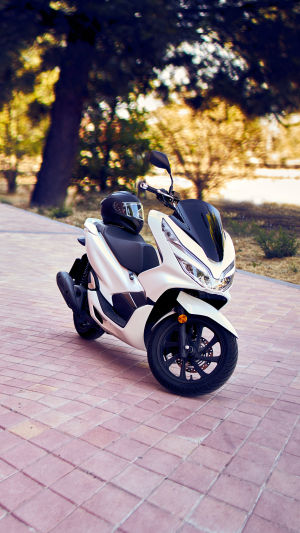By wearing the right gear and being mentally and skillfully prepared, riding in the rain can be not only safe but also an enjoyable experience.
Let's explore five essential tips for riding on wet roads:
1. Equip Yourself Properly
Ensure you have the right gear for a safe riding experience in the rain. It is recommended to have a waterproof riding suit, two raincoats (one as a spare), waterproof gloves, and boots.
In colder weather, consider adding an electric undershirt for extra warmth. Pay special attention to your hands and feet, as wet and cold extremities can impact your vehicle control, especially in emergencies.
In colder weather, consider adding an electric undershirt for extra warmth. Pay special attention to your hands and feet, as wet and cold extremities can impact your vehicle control, especially in emergencies.
Opt for eye-catching clothing with reflective strips to enhance visibility and make yourself easily noticed by other road users. Additionally, address the visibility of your helmet by using anti-fog stickers or wearing an anti-fog mask.
2. Go Slow and Steady
The reduced grip on the road surface is a significant factor when riding on wet or slippery roads. Experimental data indicates that the coefficient of friction on a wet road is typically only 50% to 70% of that on a dry road.
In response, accelerate or release the brakes slowly to avoid exceeding the limits of grip. If your motorcycle has different riding modes, switch to the rain mode, especially for larger displacement motorcycles.
3. Approach Intersections with Caution
Intersections are inherently high-risk areas, and rainy conditions amplify the dangers. Decreased visibility and longer braking distances make every intersection a potential hazard.
Whether there's a stoplight or not, approach intersections with extra caution, slow down early, observe road conditions, and if there's a traffic light, wait a moment before proceeding to ensure safety.
4. Beware of Unexpected Hazards
On slippery roads, seemingly harmless elements become safety hazards. Pay attention to road paint lines, which can be as tricky as ice on wet surfaces.
Also, be cautious of standing water, which reduces grip and may hide drain lines beneath. Avoid paint lines and standing water whenever possible to prevent accidents.
5. Follow Rut Marks
In wet conditions, roads are not uniformly flat, often with higher centre and lower sides.
Additionally, during heavy rain, the rut marks created by the front car can help drain water from the road. Maintain a reasonable distance from the vehicle before you and follow its rut marks to gain extra traction.
Adhering to these five tips can enhance your safety and enjoyment while riding on wet roads. Remember, with the right gear and careful consideration of road conditions, riding in the rain can be a satisfying experience.





